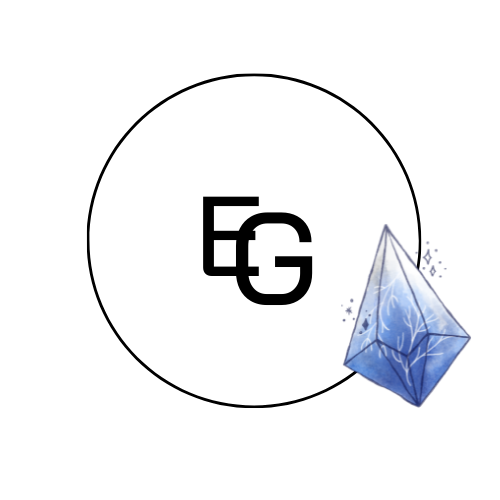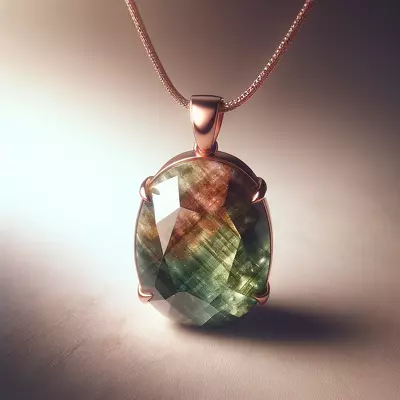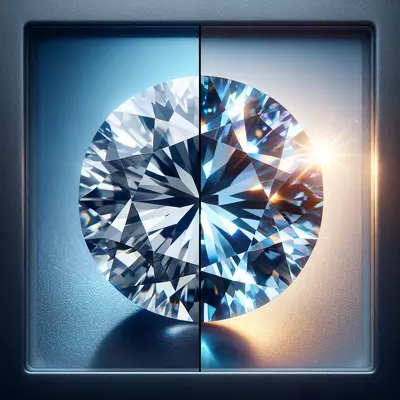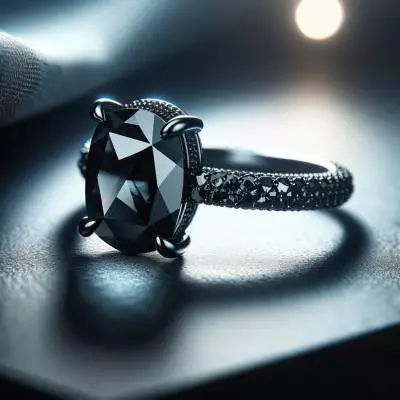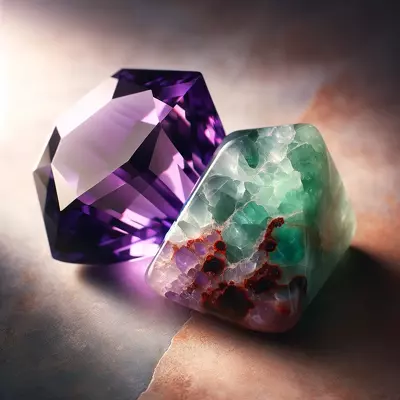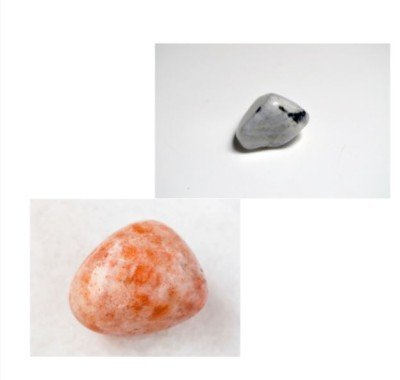Amethyst and Citrine Together Meaning: A Tale of Two Gems and Their Mystical Union
Amethyst and citrine, two striking gemstones, each hold unique significance in various cultural and spiritual contexts. When combined, they form a powerful duo known as ametrine, blending the serene, reflective qualities of amethyst with the bright, energizing aspects of citrine. This fusion is believed to harmonize mental clarity and spiritual insight, making it a sought-after combination in jewelry and healing practices. The pairing of these gems offers a fascinating insight into the world of gemstone symbology and energy.
I. Introduction
A. Historical Significance of Amethyst and Citrine
Amethyst and citrine have captivated human imagination for centuries. Amethyst, known for its rich purple hue, was once as valuable as ruby and emerald. Its presence in royal crowns and religious artifacts across civilizations signifies its importance. Citrine, with its warm yellow tones, has been cherished for its rarity and perceived protective powers. These gemstones, deeply rooted in history, have been symbols of wealth, spirituality, and protection.
B. The Formation of Ametrine
Ametrine, a remarkable combination of both amethyst and citrine, occurs when iron impurities in quartz are unevenly distributed, resulting in a natural gradient of purple and yellow. This rare phenomenon, primarily found in Bolivia’s mines, offers a unique visual representation of two distinct gemstones coexisting within a single crystal.
C. Cultural and Spiritual Interpretations
In various cultures, the blend of amethyst and citrine is seen as a bridge between the physical and spiritual realms. It’s believed to balance the calming energy of amethyst with the revitalizing energy of citrine, creating a stone that fosters harmony, creativity, and mental clarity. This fusion is often used in spiritual practices to enhance meditation and promote emotional well-being.
II. The Properties of Amethyst
A. Physical Characteristics
Amethyst, a variety of quartz, is distinguished by its violet color, which can range from light lavender to deep purple. This coloration is due to irradiation and iron impurities. The stone’s durability and luster make it a popular choice for jewelry.
B. Healing and Spiritual Benefits
Amethyst is celebrated in the realm of healing crystals for its purported ability to calm the mind, soothe emotions, and enhance spiritual awareness. It is often used in meditation and stress relief practices. In a spiritual context, amethyst is linked to the third eye and crown chakras, believed to enhance intuition and connect the user to higher states of consciousness.
C. Historical and Cultural Relevance
Historically, amethyst held significant value in ancient Greek and Roman societies, often used as a symbol of sobriety and clarity. Its presence in Christian church artifacts, such as the Bishop’s ring, denotes its spiritual significance. In various cultures, amethyst has been used for protection and to symbolize royalty and purity.
III. The Significance of Citrine
A. Physical Attributes
Citrine, another variety of quartz, is known for its translucent golden-yellow to brownish hue. This color results from the heat treatment of amethyst or smoky quartz. The natural form of citrine is relatively rare, adding to its allure.
B. Healing Properties and Metaphysical Aspects
Citrine is often associated with positivity and abundance. It’s believed to attract wealth, success, and prosperity. In healing circles, it’s used to dispel negativity and promote joy and optimism. Citrine is also linked to the solar plexus chakra, believed to boost personal power and energy.
C. Citrine in History and Culture
Citrine has been used as a decorative gem for thousands of years. In ancient times, it was treasured as a “merchant’s stone,” thought to aid in acquiring and maintaining wealth. Its sunny color has made it a symbol of happiness and vitality in various cultures.
IV. Ametrine: The Fusion of Amethyst and Citrine
A. The Process of Natural and Artificial Formation
Ametrine’s formation is a rare geological event, with the most significant source being the Anahí Mine in Bolivia. Artificially, ametrine can be created by partially heat-treating amethyst, replicating the natural process. However, natural ametrine is prized for its unique and unreplicable blending of colors.
B. Symbolic Meaning and Uses in Healing
In the world of crystal healing, ametrine combines the tranquility of amethyst with the uplifting energy of citrine. It is believed to stimulate creativity, aid concentration, and balance emotional extremes. Ametrine’s dual nature makes it a powerful tool for those seeking balance in their personal and professional lives.
C. Ametrine in Jewelry and Ornamentation
Ametrine’s striking appearance, with its blend of purple and yellow, makes it a popular choice for unique jewelry pieces. Its ability to display two colors within the same stone offers a distinctive aesthetic appeal. Ametrine is often cut to showcase the color transition, making each piece a one-of-a-kind creation.
V. The Impact of Color Psychology
A. The Psychology of Purple and Yellow
The colors of amethyst and citrine, purple and yellow, hold significant psychological implications. Purple is often associated with nobility, spirituality, and creativity, while yellow symbolizes joy, energy, and optimism. The combination of these colors in ametrine represents a balance between thoughtfulness and cheerfulness, introspection and extroversion.
B. Color Influences in Gemstone Therapy
In gemstone therapy, colors play a crucial role in influencing emotions and energies. The purple of amethyst is believed to promote calmness and clarity, while the yellow of citrine is seen as energizing and uplifting. Ametrine, with its combination of these colors, is thought to offer a harmonious balance, making it a versatile tool in color therapy.
C. Interpreting Ametrine’s Colors in Practice
In practical applications, the dual colors of ametrine can be used to address different emotional and spiritual needs. Its unique color combination is often utilized in meditation and healing practices to harness both the soothing and energizing qualities it embodies.
VI. Comparing Amethyst, Citrine, and Ametrine
A. Differences in Composition and Appearance
While amethyst and citrine are both varieties of quartz, they differ in color due to their distinct impurities and formation conditions. Ametrine, as a combination of the two, displays a unique partition of these colors, making it an extraordinary gemstone in terms of appearance and composition.
B. Varied Healing Properties
Each of these stones possesses a unique set of healing properties. Amethyst is known for its calming and intuitive qualities, while citrine is celebrated for its energizing and prosperous attributes. Ametrine merges these properties, offering a comprehensive tool for physical, emotional, and spiritual healing.
C. Choosing Between the Stones
Selecting between amethyst, citrine, and ametrine depends on individual needs and intentions. Amethyst is ideal for those seeking mental peace and spiritual growth, citrine suits those aiming for joy and success, and ametrine is perfect for those who desire a balance of these energies.
VII. FAQs
Q: Can we wear amethyst and citrine together?
A: Yes, wearing amethyst and citrine together is not only aesthetically pleasing but also believed to bring a balance of calming and energizing energies, enhancing mental clarity and emotional well-being.
Q: What are amethyst and citrine called together?
A: Amethyst and citrine together are known as “ametrine.” This naturally occurring combination features the distinct colors of both stones, blending the purple of amethyst and the yellow of citrine.
Q: What is the meaning of amethyst citrine stone?
A: The amethyst citrine stone, or ametrine, symbolizes the harmonious balance of mental peace and emotional strength. It is believed to merge the soothing properties of amethyst with the uplifting qualities of citrine.
Q: What pairs best with citrine?
A: In gemstone combinations, citrine pairs well with stones that enhance its positive energies, like clear quartz for amplification or contrasting stones like amethyst for balancing its vibrant energy.
Q: How does ametrine affect energy and mood?
Ametrine is believed to positively influence energy and mood by combining the calming effects of amethyst with the joyful and energizing vibes of citrine. It is ideal for enhancing creativity and emotional equilibrium.
Q: Is ametrine naturally occurring or artificial?
A: Ametrine is a naturally occurring gemstone, most notably found in the Anahí Mine in Bolivia. However, there are also artificial versions created through the heat treatment of amethyst.
Q: Can ametrine be used in healing practices?
A: Yes, ametrine is often used in healing practices for its dual properties. It is believed to aid in meditation, foster creativity, and balance emotional extremes, making it a versatile tool in crystal healing.
VIII. Conclusion
A. Summary of Key Points
In this exploration of amethyst and citrine together, we’ve delved into their historical significance, individual properties, and the unique blend they form as ametrine. We’ve seen how their combined energies provide balance, creativity, and well-being and how these stones have been revered across different cultures and eras for their distinct attributes.
B. Future Perspectives in Gemstone Therapy
The future of gemstone therapy, with stones like ametrine at the forefront, looks promising. As more people seek holistic well-being approaches, the use of these gemstones for emotional and spiritual healing is likely to gain more recognition and scientific interest.
C. Personal Reflections on Amethyst and Citrine Together
The fusion of amethyst and citrine in ametrine presents a beautiful metaphor for balance and harmony in life. It reminds us of the importance of embracing both our calm, introspective sides and our bright, energetic aspects to achieve a full, balanced life.
IX. Suggested Readings
Before embarking on a deeper journey into the world of gemstones, consider these insightful books that offer a blend of scientific knowledge, historical context, and spiritual perspectives.
- “The Crystal Bible” by Judy Hall – A comprehensive guide to crystals, their properties, and how to use them for healing.
- “Love is in the Earth” by Melody – This book provides an exhaustive encyclopedia of the metaphysical properties of crystals and minerals.
- “Crystal Healing & The Human Energy Field” by Mrs. Marion McGeough – An insightful exploration of how crystals interact with the human energy field.
- “Gemstones of the World” by Walter Schumann – A detailed and beautifully illustrated reference to the world of gemstones, including amethyst and citrine.
- “The Book of Stones: Who They Are and What They Teach” by Robert Simmons and Naisha Ahsian – This book offers a profound spiritual understanding of the healing powers and metaphysical properties of stones and crystals.
These readings offer a pathway to deepen your understanding and appreciation of gemstones like amethyst and citrine and their unique place in the natural world and human culture.
